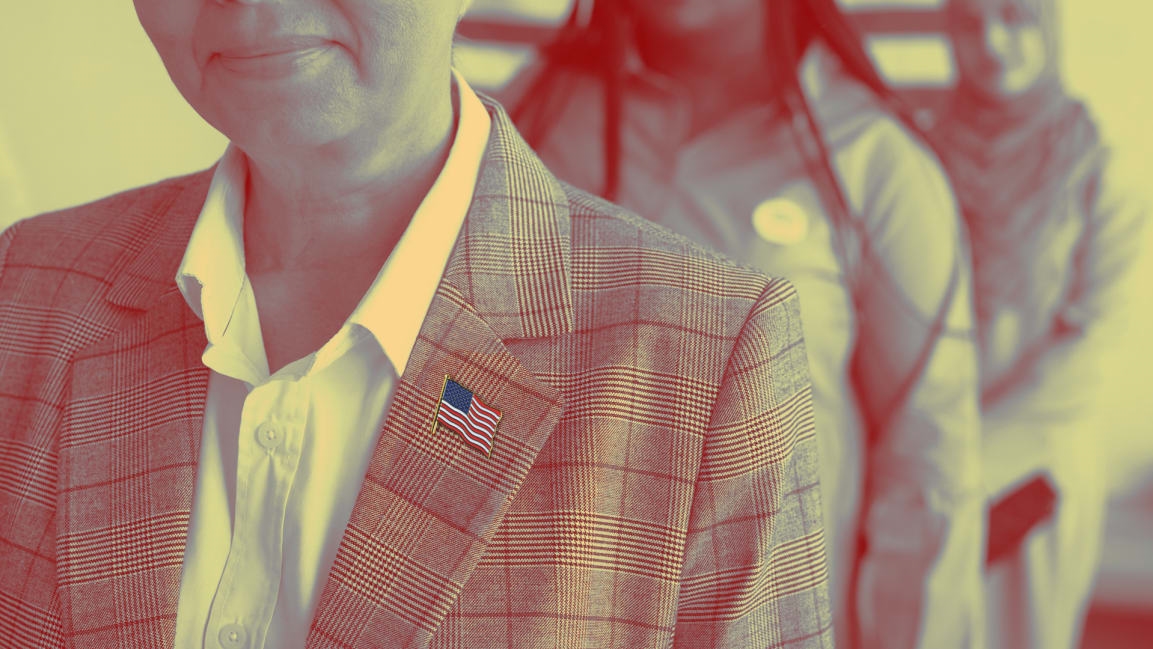For women in leadership, breaking unwritten rules is part of the process
And while there are differences from district to district, state to state, race to race, and election year to election year, there are certain campaign lessons that apply across the board. I believe strongly in those lessons. But I also want to make sure you understand that one of the most important parts of knowing the lessons and unwritten rules is figuring out when you can and should break them.
For the sake of my compliance and legal team, I’ll note: I’m not talking about laws or federal, state, or local election rules. Those laws and rules are not to be broken. They’re there for a reason, and if you want to be elected to make laws, it’s generally a good idea not to break them. And a disclaimer to that disclaimer: I am, of course, not including acts of protest or civil disobedience here. Some of America’s most important changes have been a result of people’s staging sit- ins or protests, thanks to civil rights or environmental protestors literally putting their well- being on the line to impact change. As the late, great Georgia Representative John Lewis, a man who’d been arrested for protesting dozens of times, often noted, there is such a thing as good trouble.
What I am talking about are the unwritten rules that tell candidates, particularly women, how they should behave, how they should dress, what their backgrounds should be. The ones that say that there’s only one path to victory, only one way a candidate should look. The ones that say you can’t do certain things as a woman or can’t win certain races because of who you are or where you come from or what university you went to. Those are the rules that set arbitrary limits. In today’s world, we’ve got no time for rules like that.
You may ask why someone who came up in the political system and works in a large organization within that system wants you to break out of it. It’s quite simple: This system wasn’t designed for women like us.
It’s not just politics, of course. Everything from CPR and crash-test dummies to military equipment and space suits was designed for men. Those may seem like minor issues until you read studies showing men have significantly better odds when in a car crash or requiring CPR. A study of medical research of the last twenty- five years shows that while progress has been made, women are still underrepresented in studies of cardiovascular health, digestive health, and more. And that progress likely only came because Congress had to pass a law in 1993 to require government- funded research to include women and people of color. Women still face a gender pay gap and often pay more for everything from certain medications to razors to cars. And don’t even get me started on tampons and pads—another version of a pink tax!
Perhaps my favorite unwritten rule-breakers are the brave women who become the firsts. From Jeannette Rankin, the Montanan who was the first woman elected to Congress, to more recent firsts like the first Native American women and the first Muslim women elected to Congress, we are still seeing women of all races, ages, religions, and more break through barriers that no one has broken before, deciding to take a leap that literally no one else like them has ever taken.
These women had to figure out how to do something big without an example. They had to break the mold of people’s expectations, which had never included someone like them.
Imagine that for just a moment—doing something that no one like you has done before. These women had to figure out how to do something big without an example of how to do it. They had to break the mold of people’s expectations, which had never included someone like them. And they had to show the voters why breaking that mold and adding a new voice was important. I’ve seen it many times at EMILY’s List: The women who break through—the firsts, seconds, and thirds—they do the work; they get to know people in their community and help them understand that we are far more alike than we are different. That’s when they find success.
And that success matters for all of us. Those firsts expand the opportunities for everyone. There’s power in the adage “If you can see it, you can be it,” and that power is made possible by the ground-breakers. Their wins prove to everyone that elected office and leadership are possible, no matter what your story is. And everyone’s lives are made richer by having that diversity of voices in our system. It’s true in politics, and it’s true in so many aspects of our society, from schools to businesses: We are better and often more effective when we have a diversity of voices in the conversation.
And I’m not just saying that because it’s the right thing to do (although it certainly is) or because we believe in the power of diversity (although that’s true, too). Having more women at the table makes things work better. As Harvard Business Review noted, several studies suggest “having women on the board means better acquisition and investment decisions and less aggressive risk-taking,” which means better rewards for shareholders. One theory was that the women balanced out the overconfidence of male CEOs, though there could be many explanations. Having women in elected office makes an equally important difference. Hardworking women looking to change the world get so much done.
But America’s elected leaders have mostly been men. That’s why when many Americans picture a president, a senator, a CEO, a leader, they see a man. To change that, we need to change the norms. We need the firsts and the seconds and the thirds, and the tenths, because each one is a vital step on the road to progress. And though we have a long way to go, we’re ready for the time when it’s so normal to see women in those roles, we don’t have to celebrate each victory. It’s just what we expect.
As Stacey Abrams once noted, gaining power means you can be the “last” woman to deal with political, racist, or sexist nonsense. When EMILY’s List awarded Stacey our first- ever Gabrielle Giffords Rising Star Award in 2014, Stacey said: “I am tired of being first. I want to be last. . . . And the first to say thank you.”
Adapted from: RUN TO WIN: Lessons in Leadership for Women Changing the World by Stephanie Schriock, President of EMILY’s List, with Christina Reynolds. Copyright © 2021 by Stephanie Schriock. Published by arrangement with Dutton an imprint of Penguin Publishing Group, a division of Penguin Random House LLC
Stephanie Schriock, a native of the copper-mining town of Butte, Montana, has been working to get Democrats elected for 25 years. Since Schriock became president of EMILY’s List in 2010, she has overseen a decade of phenomenal growth in the organization, raising hundreds of millions of dollars, helping elect record numbers of women to the House and Senate, and recruiting and training hundreds more. EMILY’s List is now nearly five million members strong.
(34)



